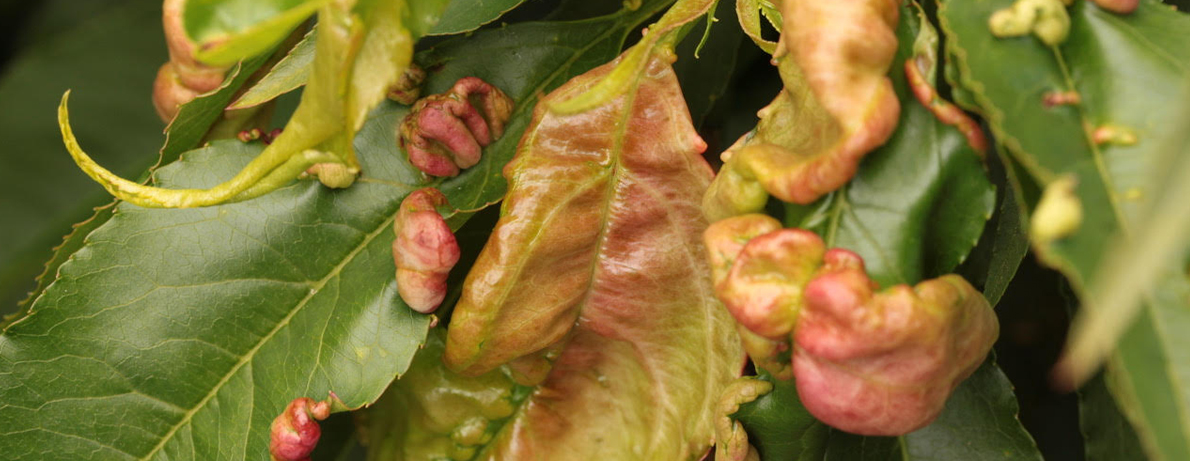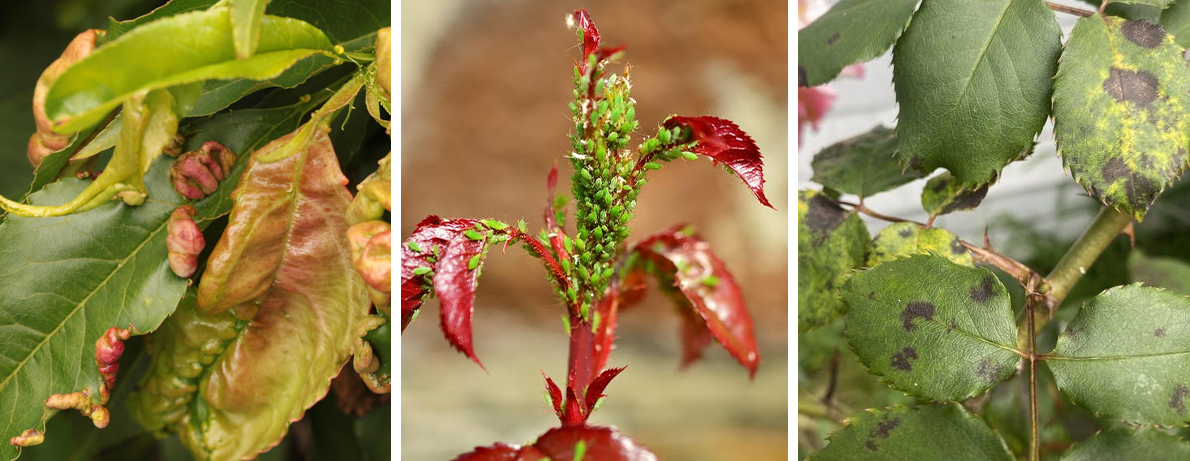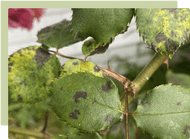Posted by Kelly Jean Reyland
11th Jan 2024
Pest and disease control in the garden

Let’s look at this from two perspectives – firstly how to minimise pest and disease issues in your garden – prevention – and then what to do if they arrive in your garden – cure.
The old saying goes ‘A pinch of prevention is worth a pound of cure’ and it’s very true!
So, what can we do in our gardens to minimise or even prevent issues with pests and diseases?
- Let nature do the work for you and choose disease resistant varieties where possible when you are planting. Words like ‘High health’ or ‘natural disease resistance’ on description tags are a good place to start. Many hybrid vegetable seeds have an increased resistance to disease. You’re essentially choosing the plant with really good natural immunity.
- Practice crop rotation in your vegetable beds to avoid buildup of pests or diseases (read this blog for more info on crop rotation)
- Improve drainage and aeration by adding compost and raising planting beds on clay soil to help avoid root rot.
- Remove alternate host plants as much as possible. This removes infection sources. (The plant equivalent of ‘social distancing’).
- Follow a spray program for your pip and stone fruit trees, in wintertime for cleanup and protection, followed by different sprays just prior to and immediately after flowering for control of codling moth and fruit rot diseases.
- Avoid using Pyrethrum as this is very toxic to beneficial and pollinating insects.
- Maintain good hygiene, by removing diseased or insect infested leaves at first sign. This helps prevent the spread, as it physically removes the issue from your garden. Put it in the rubbish bin! This also applies at the end of the season, if you have had trouble with a fungal disease on your plants or insect infestation, make sure you thoroughly remove affected leaves and infested plants from the ground under the plant or even the plant itself and put them in the bin. Leaving them lying on the ground or putting them in the compost bin enables spores and insects to reinfect the tree next season, or even spread the spores around the garden, in the case of compost!
- In established plants, ensure good air flow through the branches by thinning out if necessary. Pests love sheltered warm spots to live in.
- Stressed plants - like humans - will catch diseases or insects much more easily. Ensure plants are in the appropriate growing position and water and feed appropriately throughout the year.

Images: Curly Leaf on peach, Aphids, Black Spot on roses
And how do we cure the disease or kill the insects if they arrive?
- One of the most important things you can do is to spend time in your garden regularly and pay attention to the plants when you're there. If you see the first sign of insects or disease and do something about it, you can literally nip the issue in the bud.
- As we said above – physically remove the first sign of pests or diseases and put them in the bin.
- Follow this up by a safe pesticide approved for the affected crop.
- *Super important step* - Repeat this spray following instructions on the bottle for number of days between sprays. Insects can reproduce incredibly quickly and in large numbers so you MUST break the life cycle if you are going to be successful in getting rid of them. If you have found a large outbreak, you may need to repeat the spray a number of times to get on top of it.
- For edibles where we are dealing with contact sprays that must touch the insect to kill it, you must be very thorough in your application. Pay close attention to the undersides of leaves and on the stems. All good places for them to hide.
- Add a ‘sticker’ to the spray such as a spraying oil that literally helps the spray to adhere to the leaves rather than slide or bead off shiny or hairy surfaced leaves. It will make the spraying that you do much more efficient and effective.
- If you are dealing with a significant infestation or a hard to kill insect (looking at you white flies!) it is useful to spray with different pesticides that have different ‘modes of actions’ i.e. the way they kill the insect and which stage of the lifecycle they target. For example, a spraying oil like Grosafe Enspray kills by smothering/suffocation. It is particularly good dealing with eggs and early stages of the life cycle. Neem Oil works both as an antifeedant - the insect stops eating and starves - and as a lifecycle disruptor - stops juvenile insects maturing into breeding adults. So, Neem works well on the older stages of the life cycle. When used together you have targeted all stages of the life cycle, and the insects are being killed in 3 different ways which increases the chances of them being killed. But let me repeat – Ensure that you repeat the sprays within the number of days on the bottle, so you are indeed breaking that insect life cycle in as many places as possible!
Insect and disease infestations don’t go away on their own. Ignoring them is never a good option. Keeping your plants happy and healthy is the best way to prevent problems in the first place!
Check out our range of Insect Pest Control and Plant Disease Control, or take a look at our Organic Garden range.
Written for Gubba by Kelly Jean Reyland from Garden Advice NZ (www.gardenadvice.co.nz)


























